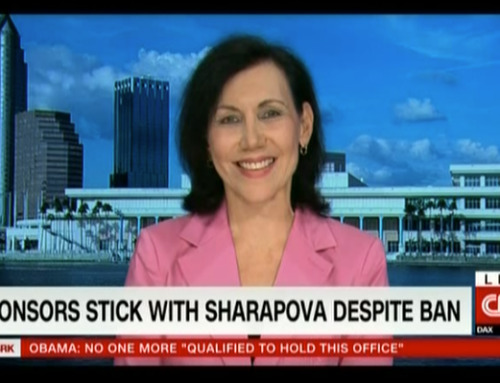By Luis Rivera
 Marketers plan to increase their pay-per-click (PPC) budgets by at least 11 percent in 2008, according to MarketingSherpa’s Search Marketing Benchmark Guide for 2008, as reported by eMarketer.
Marketers plan to increase their pay-per-click (PPC) budgets by at least 11 percent in 2008, according to MarketingSherpa’s Search Marketing Benchmark Guide for 2008, as reported by eMarketer.
It’s not hard to see why, when you consider the immediacy and the measurability of PPC advertising. A marketer can follow someone who clicks through to the company’s Web site from Google, Yahoo and other search engines, knowing the visitor found the site using the keyword phrase “hotels in Miami.” He’ll know what pages the consumer visited and exactly how much time she spent in each area of the site. The marketer also will know whether or not the consumer booked a room and, if not, at what point she left.
It’s this measurability that makes it such a valuable channel. In 2006, North American companies poured $8 billion into paid search. There’s no question that PPC lures a significant portion of new customers to Web sites. But less than 5 percent of PPC visitors typically take the desired action once they arrive at a site.
So what happens to the other 95 percent – or roughly $7.6 billion that marketing departments spend on PPC programs?
As companies invest more of their advertising budgets in PPC, marketers are under pressure to protect those investments by squeezing all the ROI they can from their PPC spending. But to do this, they must abandon the linear concept of driving clicks from a search engine to a Web site, and instead embrace the idea of PPC at the center of a larger, living online ecosystem.
Here, a host of “living organisms” nurture and support each other – search engines, Web sites, landing pages, email, blogs, RSS feeds, along with tools for content management, Web analytics, bid management and keyword identification, among others. Every technology tool at a marketer’s disposal is made more valuable when it works in concert with all the others. Used effectively, they’ll increase PPC’s ROI.
Here are some ways to make the ecosystem work for you.
Your Web site is your hub – all PPC spending drives people there. Get it in order.
Optimize your Web site.
One of the most effective strategies for gaining more search engine traffic is to make your Web site easier to find in natural (free) search results. Search engines will look at your page content, meta data, outbound links, header tags and URLs – so make them keyword-friendly. But beyond that, a Web site should be optimized for conversion. Make sure when people arrive at your site they find something they’ll want – product information, interesting or educational content, discount offers, or community-building tools like a chat room.
Create customized landing pages.
Design specific Web site pages to capitalize on leads generated from your marketing campaigns. If a consumer searched on Google for a red purse and clicks on your ad, don’t send her to your home page – send her to a page that showcases red purses. Greet visitors with content that increases the likelihood they’ll take the action you want – buy a product, subscribe to a newsletter, sign up for a Webinar, download a white paper, etc.
Upgrade your content management system.
Use a Web content management system (CMS) that makes it easy for non-technical people to add or change the content on your Web site. The search engine algorithms like Web pages that are updated frequently. Plus, this pliability will allow you to adjust content according to your latest visitor trends and to respond opportunistically to any newly identified keywords.
Every click is an opportunity for a relationship. Extend the invitation.
Invite visitors into an email relationship.
The unsung workhorse that turns some of the “wasted” PPC investment into customer conversion turns out to be email marketing. Email picks up where PPC leaves off, allowing companies to build long-term relationships and generate additional business over time. A new Web site visitor who may not be ready to buy – but signs up for a newsletter or promotional email – extends the ROI of the original PPC spend.
Create community to keep them coming back.
If you turn your Web site into a thriving community where people know they can find valuable content, they’ll come back for more. Things like blogs, RSS feeds, chat rooms and even games go a long way toward making your site a destination. This approach might not be appropriate for every company, but many brands would benefit from being associated with this social approach.
Efficiently get those online leads to sales and marketing teams.
In many cases, those in marketing have PPC advertising down to such a science that they can “turn the dial” to increase or decrease the number of leads at any given time. But what happens to those leads next will determine the success of that PPC spending. If you use forms to get more information and filter the lead, choose your questions carefully and strategically, and get feedback from the sales team about the quality of the information. Then sync up those forms with your customer relationship management software (like Salesforce.com), so the leads will be automatically routed as appropriate.
Measure and evaluate everything. Then use that data.
Invest in a good Web analytics solution.
These range in price from free to many thousands of dollars per month, so find the level that will provide you with the data you need to help you know your customers, track site navigation patterns, determine which PPC ads are performing and which aren’t. Then use that data. Change your landing pages accordingly, adjust Web site content as needed, identify better-performing keywords and dump the losers.
Personalize as much as possible.
The more you know about your audiences, the more you can personalize your communication with them. Serve content to people on a landing page based on the keywords that they used, the banner ads they clicked or the Web sites from which they came. Use trigger-based email technology to send personalized messages once a customer takes a specific action. For example, an abandoned shopping cart might trigger a follow-up email message from you that offers free shipping or discounts on relevant products. All of these capabilities allow you to be more targeted and relevant in your approach.
There’s no doubt that PPC advertising drives traffic. But what we’re all after is ROI, and for that, PPC doesn’t work alone. It’s part of the larger online ecosystem.
Luis Rivera is CEO of Lyris, Inc. (previously known as J.L. Halsey), a provider of marketing technology solutions including Lyris, EmailLabs, Sparklist, ClickTracks, Hot Banana and EmailAdvisor.





